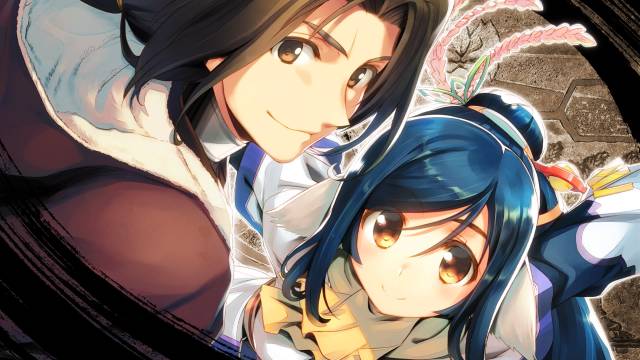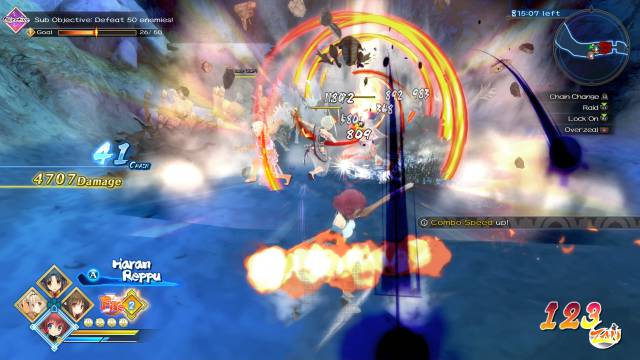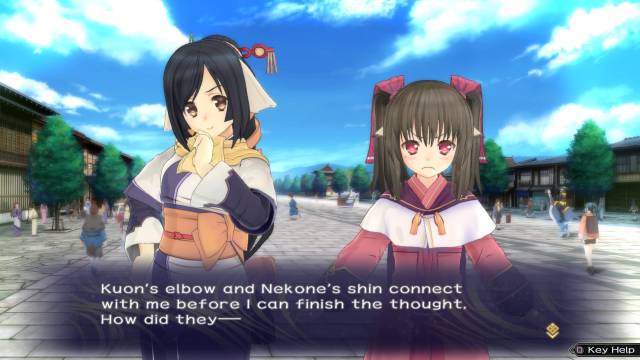
Tamsoft, the study responsible for the Senran Kagura series, offers us this new action title based on the second installment of the Utawarerumono series.
Utawarerumono is one of the franchises that the Aquaplus studio has made profitable in recent years with the release of the continuation of the story of the original game on PlayStation 4. Originally intended as a tactical RPG game with touches of novel visual for adults, including scenes hentai, the game quickly gained popularity after its original release in 2002 to the point that it received adaptations to other media such as manga and anime series, OVAs and even later conversions of the game, eliminating the risque scenes as usual, for PlayStation 2 and PSP. To this we must add the appearance of some characters of this franchise, along with others in the studio, in the PS3 fighting game Aquapazza: Aquaplus Dream Match.
It was not until 2015 that the series has continued with two other games, Utawarerumono: Mask of Deception and Utawarerumono: Mask of Truth, that have continued the plot presented in the original game, both having appeared in the West in 2017. Today we get another title of the franchise but that in this case leaves aside the facet of visual novel to a great extent to offer more direct action of beat'em up style by Tamsoft, known for being responsible for sagas like Senran Kagura, Onechanbara or games like Hyperdimension Neptunia U.

The story presented by this game is based, somewhat briefly, on what happened in Mask of Deception, following the adventures of Haku and his friends through several phases that will capture some important moments of the plot through its playable facet . When starting the game for the first time, the player will take control of Kuon in a part that recalls the intro of the original game, and then start the plot in the first bars of history by controlling Haku and facing a group of beasts with other characters
The main game mode is the story mode, included in the Hakuou Arena option, which apart from narrating the plot through the playable phases includes novel visual cuts. These unlike the original game, which showed illustrations of great quality and style of the characters, in this case it is done through a faithful adaptation of them in 3D modeling. Each phase of the story mode will not only be limited to the typical action of eliminating enemies in the field by achieving a large number of combos, customary within the genre, but also fulfilling a series of objectives that will be offered in the course of it, offering targets such as knocking down a certain number of enemies of a particular type or fighting and defeating certain units. In turn, additional secondary objectives will be offered, which are not mandatory to complete the phase but that do serve to, once the requirements have been completed and the phase is finished, unlock additional content and gain additional experience or money for the game's characters. Finally, the phases will end once all the objectives are met or, on the contrary, defeating their respective boss.
The movements of the characters include basic attacks, executed with the square button, and special attacks, with the triangle button, being able to chain these to be able to make combinations. Pressing the buttons for each of these techniques will provide a different effect on the attack. Then there is the Chain Attack, which is executed by pressing the circle button and spends part of the Zeal bar, located below the life bar, which allows you to use powerful techniques to attack enemies. The latter has a variant, True Chain, which requires pressing the button when the circles that appear on the screen coincide with its range, which will give greater power to the technique. By pressing the R1 button you can use Raid movements with other characters to perform either support or attack techniques to help against the enemies, which can be configured between the options of the character menu in the Party option of the main menu or in your default by choosing in the configuration of units before each phase. Finally, there is the special technique of each character that, having the Zeal bar to the maximum, allows, when pressing the touchpad of the command, to enter the Overzeal state that will have different effects depending on the level at which the bar was previously, being able to accumulate a maximum of three levels as the character level increases. In this state, if pressed again, it will be possible to execute this attack that includes a special animation and that, depending on the character, will have devastating consequences for the enemies or provide support to them. Denote that during the mission you can alternate between the different characters of the group, maximum of four possible, by pressing the directional buttons of the digital crosshead of the command.
The missions of the game are not limited only to fighting against common enemies or defeating bosses, since in certain occasions survival objectives will be included in which it will be necessary to survive the attacks of the rival in a limited time, avoiding by all means that the Group be annihilated. There will also be missions that will specifically indicate when an enemy cannot be defeated by normal means. This applies, for example, in one of the first missions of the game, where the objective is to escape from a large Giro-Bibiri.

At the end of each mission, the experience and money earned will be counted, as well as the materials obtained. This experience will allow them to level up, but in turn they will obtain a series of special points, Bonus Points, which will improve their parameters to achieve better combat performance. Thus the levels of life points (HP), attack, defense, spirit and specialty can increase by one unit depending on the accumulated points and, in addition, drastically improve the parameters if the level marked with a star is reached. On the other hand, the level of specialty, specifically, allows you to use, depending on the character, several equipment slots with which to use different types of scrolls with the characters, improving their performance in combat with different effects such as getting more experience, attack, defense, etc. Also in the improvement screen of each unit you can see other sections such as the abilities of each character, combo movements and techniques, equipment and also be able to change the suit with other variants in different colors. Finally, when configuring the combat group before each phase you can choose a scroll embedded in different elementary seals that will provide varied effects in combat depending on the chosen one, such as fire will improve attack power, ground the defense, etc. The requirements to activate the effect are varied, including eliminating a specific type or amount of enemy.
Another game mode included in the Hakuou mode is the collection of memories, which allow you to replay the phases of the story mode again to meet the pending objectives. Upon completion of 100% in its entirety, the option to play them on a higher difficulty level will be unlocked. On the other hand, the Free Mission mode is also included, which consists of several levels in which to carry out different batches of missions to unlock new clusters in different ranges that include others of greater difficulty. It also includes the possibility of playing special missions, an option highlighted with green color, which allows those included as DLC to be played and that provide a greater chance of gaining experience and money. The last variant of this mode is the Battle Arena where, with each character, you will have to face different challenges, of great difficulty, in which to defeat the enemies that appear on the ground and avoid being defeated. The rewards that are unlocked in this mode are the different techniques of the characters that can be equipped to use in Raid and Chain Attack options in combat.

The scrolls and other various elements are achieved through the Equipment Upgrade option, where Uruuru and Saraana will create, in exchange for a certain amount of coins, these elements and improve them progressively, being able to unlock the different costumes for each character in this option In total, five levels (Standard, Mid, High, Master and God) of equipment improvement are offered, although initially only the first one can be accessed and only the following will be unlocked through progressively completing the Free Mission mode, counting also with the option to make an improvement for a small price or spend a large amount and carry out the process ten times in a row. It should be noted that as progress is made in the improvement of equipment, it will be more expensive for the process to be successful, although in exchange for failure, money is obtained, not in large quantities most of the time except for a stroke of luck.
In the Military Medals option, medals will be added as the relevant requirements are fulfilled, which include things like completing a number of missions in free mode, executing a certain amount of damage, getting scrolls, etc., which in turn allows unlock different types of additional extras, which also applies to the different rows and columns of which it consists.

The game offers a cooperative online mode for groups of four players in which, after creating a room, they can access by choosing a character and a mission from among those offered in this mode, which is divided into six different classes. Once in liza, players must meet the different main and secondary objectives proposed until the end of the mission, being able to communicate through stickers with different phrases. At the end of it, players will gain experience and money in addition to the additional points of improvement.
In the playable section, it should be said that the game does not surprise in excess. Your squad, with 12 characters in total, unlockable throughout the story mode, to which you can add two additional ones included by DLC (Oshtor and Munechika), is acceptable since when playing they result in different fighting styles. The AI of the enemies is not very high. Only the occasional boss of the game can present problems in high difficulties or playing with only one character in the group, but beyond that there is no challenge itself. In contrast is the wide variety of game modes that include a wide variety of missions, plus a good amount of extras.

In the graphic aspect the game offers a style close to that offered in the original illustrations through 3D modeling, although including some of the funds of the title on which it is based for the novel visual cutting parts of the game. The scenarios, meanwhile, are not very varied, including some variants of different times of the day and the occasional considerable extension.
Finally, in the sound section the game offers a wide variety of tracks that include themes of Mask of Deception as well as tracks of techno cut, some based on themes of the original game, which offer a musical accompaniment according to the action of the game, which may be heard in game options mode as they are unlocked. In turn, some vocal themes are included, such as the intro of the game or the opening sequence of the original game for the credits of this title. As for voices, the game only offers voices in Japanese.
CONCLUSION
In general terms, Utawarerumono: ZAN is a title that allows to revive the plot starring Haku and Kuon with a more focused style of musou-cut action game, although with reservations, which offers a large amount of missions and content in considerable quantity. To that add the cast of additional characters, which offers a wide variety of styles to choose from and capture some interesting moments of the plot of the original game through 3D modeling, including the climax of the game. Unfortunately, the weak point of the game is in the little variety of maps it offers when playing, in addition to being only in English.
THE BEST
- Playably direct and addictive.
- Good squad with up to 12 selectable characters.
- Wide variety of content and game modes.
- Striking musical section both for the inclusion of tracks of the soundtrack of the original title and new themes and remixes that are left to listen and accompany in each phase and in the menus of the game ..
WORST
- Texts in English.
- Little variety of maps.
Good
It meets the expectations of what a good game is, it has quality and does not present serious failures, although it lacks elements that could have led to higher levels.
